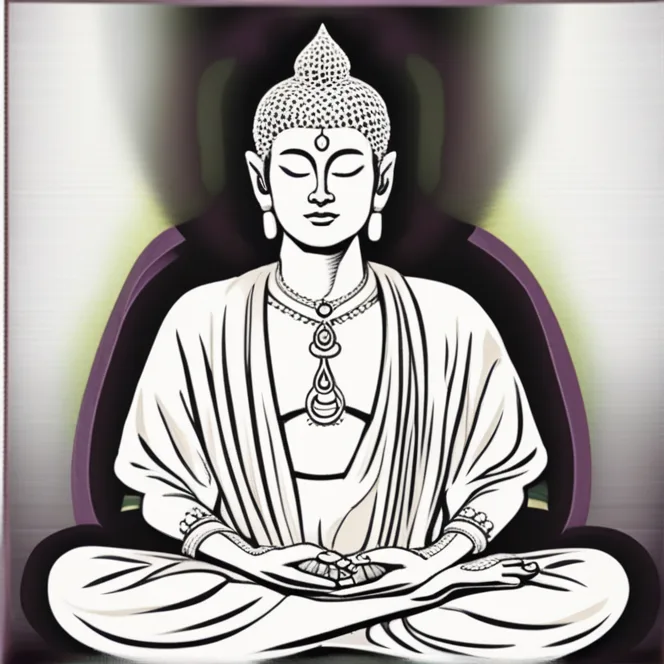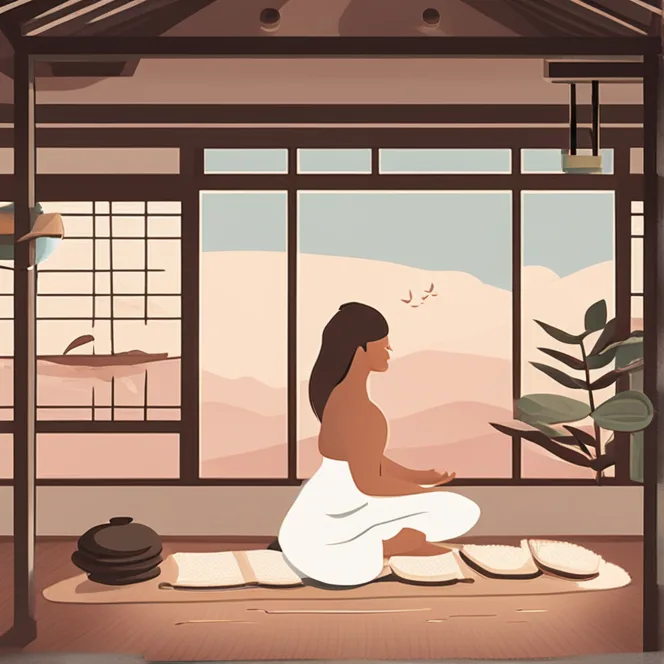
Zen Meditation Techniques Guide
Discover the serenity of Zen through simple meditation practices designed to harmonize mind, body, and spirit.
article by Hina Kurosawa
The Essence of Zen Meditation
Zen meditation, also known as Zazen, is the heart of Zen Buddhist practice. The word 'Zen' is derived from the Japanese pronunciation of the Chinese word 'Chan,' which in turn is derived from the Sanskrit term 'Dhyana,' meaning meditation. In this technique, practitioners sit in a quiet space and focus on their breathing or a particular thought to achieve a state of deep peace and self-awareness. This art of presence and mindfulness encourages a connection with the present moment, inviting clarity and tranquility into one's life.

Getting Started with Zazen
To begin practicing Zen meditation, one must first find a comfortable and quiet space conducive to fostering inner calm. Traditional Zen meditation involves sitting on a cushion known as a zafu, with legs crossed in the lotus or half-lotus position. Proper posture is crucial, with the back straight and hands in the cosmic mudra — left hand on top of the right, palms up, and thumbs lightly touching. Eyes are kept open, but with a soft focus downward to avoid distraction and sleepiness.
Mastering the Breath
Breath is the anchor of Zen meditation. Practitioners concentrate on the rhythm of their breathing — observing inhalation and exhalation without trying to control or manipulate it. This anchors the mind in the present and prevents it from wandering. As thoughts arise, the practitioner gently acknowledges them and returns focus to the breath. This process helps in cultivating concentration and the ability to remain unattached to passing thoughts.

Zen Mindfulness and Awareness
While the breath may be the primary focus, Zen meditation is also an exercise in mindfulness. Practitioners are encouraged to be acutely aware of their senses and the subtleties of their mind-body connection. Throughout the meditation, awareness of sounds, sensations, and emotions is heightened, allowing for a full immersion into the present moment. This awareness builds a profound understanding of the transient nature of all things, commonly referred to as impermanence in Buddhist philosophy.

Integration with Daily Life
Zen meditation extends beyond the cushion; it's about bringing meditative awareness into everyday life. Simple activities like walking, eating, or cleaning can become acts of meditation when done with complete attention and presence. This practice, known as mindfulness-in-action, helps one stay grounded in the Zen state of mind, maintaining peace and emotional balance in the face of life's daily stresses and during astrological shifts that might influence one's energy in 2024 and beyond.
Understanding Koans in Zen
Another technique unique to Zen Buddhism is the use of koans — paradoxical statements or questions to meditate upon. Koans are designed to transcend rational thought and provoke enlightenment or 'satori.' They break down the dualistic way of thinking, leading to an experiential understanding and a more profound insight into the nature of reality. The famous koan, "What is the sound of one hand clapping?" is an example of such an enigmatic query.
Published: 12/13/2023
Modified: 12/14/2023
More predictions
Come back here soon to learn more about yourself and your future


Embracing Gratitude Through Meditation
Discover the intertwining paths of meditation and gratitude that can lift the spirit and foster contentment in everyday life.


Mindfulness Leadership: A Modern Approach
Explore how mindfulness shapes effective leadership, enhancing decision-making and fostering a positive workplace.


The Harmony Of Meditation Sounds
Explore the serene world of meditation sounds and understand how they enhance your practice, leading to a deeper sense of peace and well-being.